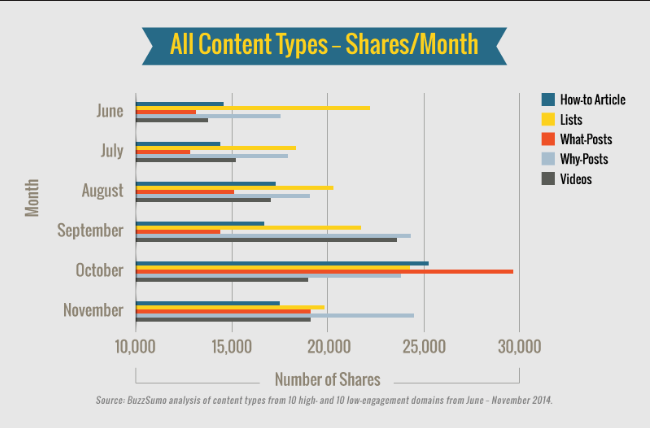5-minute guide to building your social media audience

'73% of IT executives are influenced in their decision making by social networks.' - SocialCast
A growing and active millennial presence in the workforce has made social media marketing an essential tool for B2B marketers. Providing an engaging and helpful social experience can influence customer behaviour and purchasing decisions.
Partners slow to jump on the social media bandwagon risk falling behind their marketing competitors. Follow this guide to boost social engagement in your brand and create an audience of dedicated advocates.
Why is social media good for business?
'Over the past two years, there's been a dramatic shift in the [B2B decision-maker] demographic. Back in 2012, there was a pretty even mix across age groups. In 2014, however, 18 to 34-year-olds accounted for almost half of all business [decision-makers], an increase of 70%', says Google.
Connecting with this millennial generation is the key to increasing business opportunities. Here are just a few reasons to include social media in your marketing strategy:
- Online exposure for the quality content you produce.
- Direct traffic to your website.
- A free platform for your brand.
- Direct communication channels with your core customers.
- Lead generation through direct engagement.
- SEO boost for your site.
How do I go about building my online audience?
To build an audience online, first establish where your audience is most active and how they like to be engaged. It's important to understand and respect the psychology of your customers on each social media platform: expectations on LinkedIn will differ from those on Twitter. To spark a real connection, only publish content, images and posts that will resonate with each audience.
Social media platforms: what you need to know
'Asked to identify their "top social media platforms for product launch," 81% of B2B technology marketers cited LinkedIn. 71% said Twitter, while 54% each mentioned Facebook and YouTube.' - MarketingProfs.
There are many social media platforms to choose from, so determining which is the most valuable to your business depends on your target demographics.
For now, let's focus on three of the most popular.
LinkedIn: essential information
LinkedIn remains the most popular platform for business connections.
- 106 million monthly active users.
- 44 percent are female and 56 percent are male.
- 30 - 64-year-olds make up 61 percent of LinkedIn users.
1. LinkedIn is an easy way to connect with other businesses. Building a strong community of professional contacts allows you to stay in the loop with colleagues and industry peers. Connect and engage with thought leaders to tap into their networks.
2. Update your status and comment on your contacts' statuses to improve your profile's visibility. LinkedIn sends email updates to all users in your network, so capitalise on this exposure by including links to your website in your status updates.
3. Establish yourself as a respected authority in your industry by contributing to a LinkedIn Group. If there is currently no group set up for your industry or niche, create one.
4. Push relevant ads to specific LinkedIn subscribers with Direct Ads.
Twitter: essential information
Twitter is great for content sharing and curation.
- 313 million monthly active users.
- 23% of users are 30 - 49 years old.
- 94% of users plan to make a purchase from the SMBs they follow.
1. Despite its limited character count, the impact of a tweet can be significant. Add dynamic media such as animated GIFs to your tweets to boost engagement.
2. Atomise content into digestible facts and statistics for your audience. If you've written a well-researched blog post, recycling it in this way can boost its reach.
3. Hashtags open your tweets up to a community of like-minded prospects. Use relevant hashtags in your tweets to ensure the widest reach possible.
4. Engage on a one-to-one basis with your Twitter audience to build rapport and promote advocacy. Using social listening apps such as TweetDeck, you can quickly find people interested in relevant topics and add value to their conversations.
Facebook: essential information
Facebook isn't just for personal use - it's also a great tool for B2B marketing. Set up a business account to reap the rewards.
- 1.65 billion monthly active users.
- 25-34 year olds are the most prolific users.
- 79% of 30-49 year-olds online use Facebook.
1. Promote your company culture. Unlike LinkedIn, Facebook gives you the opportunity to show the personality behind your brand through videos, visuals, customer reviews and company stories.
2. Consider your content strategy carefully to determine the media most beneficial for your target demographic. New features such as Facebook Live, Facebook Stories, images and video posts are gaining traction.
3. Think about your audience's consumption habits. 43% of users have said they would like to see more video content from businesses. However, only 15% of Facebook video is watched with sound. Keep this in mind, as subtitles may increase engagement rates.
4. Make the most of the integrated analytics tool, Facebook Insights. Noting trends in audience engagement will ensure your Facebook marketing targets as many prospects as possible.
Get your content out there
Focus your content sharing strategy on providing value and solving problems for your audience. Whether it's your own content or a third-party source, make sure it's relevant to potential customers.

HubSpot suggest these blog types are best for social traction:
- How-to posts: introduce a problem and provide a solution.
- Lists: topic specific posts offering actionable advice
- What posts: a deeper look at a subject, often offering comparison.
- Why posts: a more detailed conclusion with purposeful insight.
- Video posts: dynamic visuals condense content and increase engagement rates.
How will I know if it's working?
To ensure progress and ROI, measure your success regularly. Look at raw engagement numbers: how many people are viewing your content? Compare that with the numbers of shares, likes, and comments you receive. These will help determine whether your content is providing the right value for your audience.
An active and engaged community is one that continues to share and comment on your posts. As your social media audience grows, you'll begin to understand which content works for them and which is just filling up the empty space.
For more information on how to build a social media audience, download Microsoft's free Marketing Transformation Toolkit.